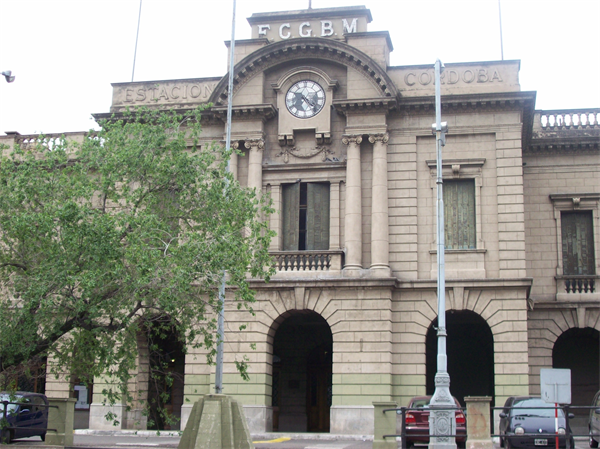- CURRENT LOCATION: HOME
- >> About Shaanxi
- >> Global Associations
- >> Sister Cities
- >>
- Xi'an
Cordoba (Argentina)
2017-04-17 10:44:11 , Source : The Government Website of Shaanxi Province
Córdoba is a city in the geographical center of Argentina, in the foothills of the Sierras Chicas on the Suquía River, about 700 km (435 mi) northwest of the Autonomous City of Buenos Aires. It is the capital of Córdoba Province and the second most populous city in Argentina after Buenos Aires, with about 1,330,023 inhabitants according to the 2010 census. It was founded on 6 July 1573 by Jerónimo Luis de Cabrera, who named it after Córdoba, Spain. It was one of the first Spanish colonial capitals of the region that is now Argentina (the oldest city is Santiago del Estero, founded in 1553). The National University of Córdoba is the oldest university of the country and the second to be inaugurated in Latin America. It was founded in 1613 by the Jesuit Order. Because of this, Córdoba earned the nickname La Docta (roughly translated, "the learned one").
Córdoba has many historical monuments preserved from Spanish colonial rule, especially buildings of the Roman Catholic Church. The most recognizable is perhaps the Jesuit Block (Spanish: Manzana Jesuítica), declared in 2000 as a World Heritage Site by UNESCO which consists of a group of buildings dating from the 17th century, including the Colegio Nacional de Monserrat and the colonial university campus. The campus belongs today to the historical museum of the National University of Córdoba, which has been the second-largest university in the country since the early 20th century (after the University of Buenos Aires), in terms of the number of students, faculty, and academic programs. Córdoba is also known for its historical movements, such as Cordobazo and La Reforma del '18 (known as University Revolution in English).
Geography
The city's geographic location is 31°25′S 64°11′W, taking as a point of reference San Martín Square in downtown Córdoba. The relative location of the municipal common land, is in the south hemisphere of the globe, to the south of the South American subcontinent, in the geographical centre – west of Argentina and of the province of Córdoba; to a distance of 702 km (436 mi) from Buenos Aires and 401 km (249 mi) from the city of Rosario
As per the provincial laws No. 778 December 14, 1878, Not. 927 October 20, 1883, and Not. 1295 December 29, 1893, the limits of the city of Córdoba are delineated in the northern part, South, East and West located to 12 km (7 mi) from San Martín Square which means that the common land has 24 km (15 mi) from side. The city adjoins in the northern territory with Colón Department summarizing a total surface of 562.
Culture
Literature
The Literary activity flourished in the city at the beginning of the last century. Córdoba was the city of Leopoldo Lugones, Arturo Capdevila and Marcos Aguinis, among many other prestigious writers. Among the city's best-known museums are the Caraffa Fine Arts Museum, founded in 1916, and the Evita Fine Arts Museum, founded in 2007. The Paseo del Buen Pastor, a cultural center opened in 2007, features an art museum, as well as a shopping gallery devoted to local vintners, cheese makers, leather crafters and other artisans.
Music
The typical music in Córdoba is the cuarteto, heard in many parties and pubs. Among the most popular cuarteto singers are Carlos La Mona Jiménez, Rodrigo, La Barra and Jean Carlos. The places they usually sing are named bailes (dances). One of the first groups was Cuarteto de Oro.
Other music styles popular with the youth are electronic music (or electro), as well as reggaeton. These are commonly played at boliches, as night clubs are known in Argentina. Córdoba is sometimes referred to as "the nightlife city" (or "the city that never sleeps"), because of its wide range of clubs and teenage matinées (dancing clubs).
Córdoba's rich musical culture also encompasses classical, jazz, rock and pop, in a variety of venues.
Teatro Libertador San Martín regularly features concerts, operas, folk music, and plays.
Monuments
Córdoba has many historical monuments left over from the colonial era. In the centre, near the Plaza San Martín square, is the Jesuit Cathedral, whose altar is made of stone and silver from Potosí. Every ornament inside is made of gold and the roof is all painted with different images from the Bible. Another important historic building is the Cabildo (colonial government house), located next to the church. The Jesuit Block, the Monserrat School, the University and the church of the Society of Jesus are also located in Córdoba.
Festivals
The first festival of the year is in February, the Carnival, where children enjoy throwing water balloons at each other on the street.
Then in the middle of the year, on 20 July, Friends Day is celebrated. Usually, most of the teenagers meet at Parque de las Naciones or Parque Sarmiento and spend the afternoon there. At night, they go dancing to different places, and enjoy a drink.
The last festival is Spring Day, held on 21 September, which is Students' Day. Many go to the park or spend the day in the nearby city of Villa Carlos Paz. There they can enjoy lots of activities like concerts, dancing, going downtown or visiting the river bank.

Government Organizations



Other Links

Copyright@www.shaanxi.gov.cn All Rights Reserved
Registration Number:陕ICP备10004160号
